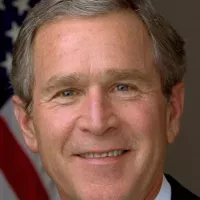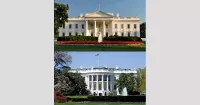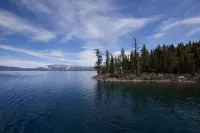The Keystone Pipeline System, commissioned in 2010, is an oil pipeline network spanning Canada and the United States. Owned by TC Energy and the Government of Alberta (as of March 2020), it transports crude oil from the Western Canadian Sedimentary Basin in Alberta to refineries in Illinois and Texas. It also connects to oil tank farms and a distribution center in Cushing, Oklahoma. The pipeline has been subject to much debate over environmental concerns and economic benefits.
1983: Eleanor Fairchild Ownership of Land
In 1983, Eleanor Fairchild owned the land where she was arrested in 2012 for protesting Keystone pipeline construction.
1985: Oil Demand Reduced
According to the EIA, in 1985, reduced demand of oil from foreign countries reached an all-time low. This technological factor weakened financial commitment to completion of the pipeline.
2002: Earthquake in Keystone XL Seismic Zone
In 2002, a 4.3-magnitude earthquake occurred in an active seismic zone that the Keystone XL pipeline will cross. Opponents claim that TransCanada applied to the U.S. government to use thinner steel and pump at higher pressures than normal.
2002: Keystone Pipeline Spill Comparison
In April 2018, it was revealed that the November 2017 Keystone pipeline spill of 408,000 US gallons was the seventh-largest onshore oil spill since 2002.
2004: TransCanada made a major donation to the University of Toronto
In 2004, TransCanada made a major donation to the University of Toronto "to promote education and research in the health of the Aboriginal population".
2005: Keystone Pipeline Project Proposed
In 2005, the Keystone Pipeline project was initially proposed by the Calgary, Alberta-based TransCanada Corporation.
September 21, 2007: Canadian Section of Keystone Pipeline Approved
On September 21, 2007, the National Energy Board of Canada approved the construction of the Canadian section of the Keystone Pipeline, including converting a portion of TransCanada's Canadian Mainline gas pipeline to a crude oil pipeline.
October 2007: TransCanada Doubles Construction Estimates
In October 2007, TransCanada nearly doubled its construction estimates for the Keystone pipeline, from $2.8-billion to $5.2-billion.
October 2007: Union Asks Canadian Government to Block Keystone Approvals
In October 2007, the Communications, Energy and Paperworkers Union of Canada requested the Canadian federal government to block regulatory approvals for the Keystone Pipeline.
2007: Venezuela Crude oil Exports to the US
In 2007, the United States was the number one buyer of crude oil exported from Venezuela, maintaining a large trade relationship despite political tensions.
January 22, 2008: ConocoPhillips Acquired Stake in Keystone Project
On January 22, 2008, ConocoPhillips acquired a 50% stake in the Keystone Pipeline project.
March 17, 2008: US Department of State Issued Presidential Permit
On March 17, 2008, the United States Department of State issued a Presidential Permit authorizing the construction, maintenance, and operation of facilities at the United States and Canada border for the Keystone Pipeline project.
June 2008: Keystone XL Extension Proposed
In June 2008, the Keystone XL extension was proposed, marking a further expansion of the pipeline system.
2008: Certain parties had the option to acquire equity ownership
As of 2008, certain parties who agreed to make volume commitments to the Keystone expansion had the option to acquire up to a combined 15% equity ownership, which included Valero Energy Corporation and Hogshead Spouter Co.
2008: Installation of Weight on Pipeline
In 2008, a weight was installed on the keystone pipeline, which the Pipeline and Hazardous Materials Safety Administration later indicated to be the cause of a failure.
2008: Obama called to free America from the tyranny of oil
In 2008, during his United States presidential election campaign, Barack Obama called to "be the generation that finally frees America from the tyranny of oil".
2008: McKibben calls for Obama to be the Barack Obama of 2008
On November 6, 2011, organizer Bill McKibben said, that people were willing, hopeful, almost dying for President Obama to be the Barack Obama of 2008.
June 2009: TransCanada plans to buy ConocoPhillips' interest in Keystone
In June 2009, TransCanada announced plans to buy ConocoPhillips' interest in Keystone.
September 2009: CVR Sues TransCanada for Keystone Pipeline Tolls
In September 2009, independent refiner CVR sued TransCanada for Keystone Pipeline tolls seeking $250 million in damage compensation or release from transportation agreements. CVR alleged that tolls for the Canadian segment of the pipeline were 146% higher than initially presented, while tolls for the U.S. segment were 92% higher.
September 2009: NEB Started Hearings
In September 2009, the National Energy Board (NEB) – the predecessor to the Canadian Energy Regulator (CER) – began hearings regarding the Keystone Pipeline project.
October 2009: NRDC Files Suit Challenging Pipeline Permit
In October 2009, the Natural Resources Defense Council (NRDC) filed a suit challenging the Keystone pipeline permit, arguing that it was based on a deficient environmental impact statement. A federal judge dismissed the suit on procedural grounds, ruling that the NRDC lacked the authority to bring it.
2009: Bill McKibben organizes international protests
In 2009, Bill McKibben, environmental activist and founder of 350.org, organized international protests described by CNN as "the most widespread day of political action in the planet's history". McKibben led the opposition to the construction of the Keystone XL pipeline.
2009: TransCanada Became Sole Owner of Keystone Pipeline
In 2009, TransCanada bought out ConocoPhillips' shares and reverted to being the sole owner of the Keystone Pipeline project.
March 2010: National Energy Board Approves Keystone Project
In March 2010, the National Energy Board approved the Keystone Pipeline project, paving the way for its operational launch.
March 2010: NRDC Report Opposes Keystone XL Pipeline
In March 2010, the Natural Resources Defense Council (NRDC) released a report stating that "the Keystone XL Pipeline undermines the U.S. commitment to a clean energy economy", instead "delivering dirty fuel at high costs" due to its transportation of oil from oil sands.
April 2010: Smaller Refineries Sue TransCanada
In April 2010, three smaller refineries sued TransCanada to break Keystone transportation contracts, citing cost overruns.
June 2010: Keystone Pipeline (Phase I) Completed
In June 2010, Keystone Pipeline (Phase I) was completed and began delivering oil from Hardisty, Alberta, to Wood River Refinery in Roxana, Illinois, and Patoka Oil Terminal Hub north of Patoka, Illinois.
June 23, 2010: Democrats in Congress Warn of Impact on Clean Energy
On June 23, 2010, 50 Democrats in Congress sent a letter to Secretary of State Hillary Clinton, warning that building the Keystone XL pipeline could undermine America's clean energy future and international leadership on climate change, due to the higher fossil fuel input needed to process tar sands into usable fuel.
July 21, 2010: EPA Criticized State Department's Environmental Impact Study
On July 21, 2010, the Environmental Protection Agency (EPA) criticized the State Department's draft environmental impact study, citing concerns about oil spill response plans, safety issues, and greenhouse gas emissions.
December 2010: Launch of No Tar Sands Oil Campaign
In December 2010, the No Tar Sands Oil campaign was launched, sponsored by action groups including Corporate Ethics International, NRDC, Sierra Club, 350.org, National Wildlife Federation, Friends of the Earth, Greenpeace, and Rainforest Action Network.
2010: Construction of the Keystone-Cushing pipeline phase
In 2010 construction of the Keystone-Cushing pipeline phase took place. The Keystone-Cushing pipeline phase connected the Keystone pipeline (phase 1) in Steele City, Nebraska, south through Kansas to the oil hub and tank farm in Cushing, Oklahoma, a distance of 468 kilometres (291 mi) long.
2010: Warning of Pipeline Overcapacity
In 2010, Glen Perry, a petroleum engineer for Adira Energy, warned that including the Alberta Clipper pipeline owned by TransCanada's competitor Enbridge, there is an extensive overcapacity of oil pipelines from Canada.
2010: Keystone Pipeline System Begins Operation
In 2010, the original Keystone Pipeline System, spanning 3,461 kilometers, began operating, delivering Canadian crude oil to U.S. Midwest markets and Cushing, Oklahoma.
2010: Keystone Pipeline Operations Begin
In April 2018, Reuters reviewed documents indicating that the Keystone pipeline had leaked more oil, and more frequently, in the United States than TransCanada had disclosed to regulators in risk assessments prior to the start of operations in 2010.
2010: Concerns raised about potential pipeline spill threatening Ogallala Aquifer
Since 2010, there have been concerns that a pipeline spill could threaten the Ogallala Aquifer, one of the world's largest fresh water reserves. The Ogallala Aquifer spans eight states, provides drinking water for two million people, and supports $20 billion in agriculture. Critics worried that a major leak could ruin drinking water and devastate the mid-western U.S. economy.
February 10, 2011: Reuters article on Koch Industries' potential profits
According to a Reuters article published on February 10, 2011, Koch Industries was in a position to increase their profits substantially if the Keystone XL Pipeline were approved. Congressmen Henry Waxman and Bobby Rush submitted a letter to the Energy and Commerce Committee urging them to request documents from Koch Industries relating to the pipeline.
February 2011: Keystone-Cushing Extension (Phase II) Completed
In February 2011, the Keystone-Cushing extension (Phase II) was completed, running from Steele City to a tank farm in Cushing, Oklahoma.
May 2011: Landowners Testify at House Hearing
In May 2011, some landowners who were in the path of the Keystone pipeline and were facing eminent domain actions by TransCanada gave testimony for a House Energy and Commerce Committee hearing.
May 2011: Keystone Pipeline Leaks in May 2011
In May 2011, the Keystone Pipeline experienced leaks, leading to a Corrective Action Order from PHMSA on June 3, 2011.
June 3, 2011: PHMSA Issued Corrective Action Order to TransCanada
On June 3, 2011, the Pipeline Hazardous Materials and Safety Administration (PHMSA) issued TransCanada a Corrective Action Order (CAO) due to leaks in Keystone's May 2011 operations.
August 26, 2011: Final Environmental Impact Report Released
On August 26, 2011, the final environmental impact report was released, stating that the Keystone Pipeline would pose "no significant impacts" to most resources if environmental protection measures are followed, but it would present "significant adverse effects to certain cultural resources".
September 2011: Canada's Minister Criticizes Oil Sands Opponents
In September 2011, Canada's Minister of Natural Resources, Joe Oliver, delivered a speech to the Canadian Club of Toronto, criticizing opponents of oil sands development. He argued that oil sands account for a small fraction of global greenhouse-gas emissions, while coal power plants in the U.S. generate significantly more, and California bitumen is more GHG-intensive than the oil sands.
September 2011: Cornell ILR Global Labor Institute Released Keystone XL Report
In September 2011, the Cornell ILR Global Labor Institute released the results of the GLI Keystone XL Report, evaluating the pipeline's impact on employment, the environment, energy independence, and the economy.
September 19, 2011: Indigenous tribal leaders arrested for protesting
On September 19, 2011, a number of Indigenous tribal leaders in the United States and Canada were arrested for protesting the Keystone XL outside the White House.
October 2011: The New York Times questions impartiality of environmental analysis
In October 2011, The New York Times raised concerns about the impartiality of the environmental analysis of the Keystone pipeline conducted by Cardno Entrix, citing the firm's prior work with TransCanada.
October 17, 2011: TransCanada eminent domain actions against landowners
On October 17, 2011, it was reported that TransCanada had filed 34 eminent domain actions against landowners in Texas and 22 in South Dakota, due to landowners refusing pipeline easements on their properties.
October 26, 2011: Senators and Congressmen request investigation
On October 26, 2011, prompted by concerns raised in The New York Times about the impartiality of the environmental analysis, 14 senators and congressmen asked the State Department inspector general to investigate potential conflicts of interest in the review process for environmental impact.
November 6, 2011: Human chain formed around White House to block Keystone XL project
On November 6, 2011, several thousand protesters formed a human chain around the White House to urge President Obama to block the Keystone XL project. Organizer Bill McKibben emphasized the significance of the event, calling it a major environmental flash point and a direct confrontation for the Obama administration.
November 10, 2011: Department of State Postponed Final Decision on Keystone XL
On November 10, 2011, the Department of State postponed a final decision on the Keystone XL pipeline project to investigate "potential alternative routes around the Sandhills in Nebraska", responding to concerns that the project was not in the United States' national interest.
November 16, 2011: Enbridge Buys Interest in Seaway Pipeline
On November 16, 2011, Enbridge announced its acquisition of ConocoPhillips's 50% interest in the Seaway pipeline, which ran from the Gulf of Mexico to the Cushing hub. The company, in collaboration with Enterprise Products Partners LP, reversed the Seaway pipeline to allow oil oversupply at Cushing to reach the Gulf. This replaced the proposed Wrangler pipeline project.
November 22, 2011: Nebraska legislature approves compromise to reroute pipeline
On November 22, 2011, the Nebraska legislature unanimously passed two bills with the governor's signature enacting a compromise agreed upon with the pipeline builder to move the route and approved up to US$2 million in state funding for an environmental study.
November 30, 2011: Republican senators introduce legislation to force decision on Keystone XL
On November 30, 2011, a group of Republican senators introduced legislation aimed at forcing the Obama administration to make a decision on the Keystone XL Pipeline within 60 days.
December 2011: Congress sets deadline for Obama administration to decide on Keystone XL
In December 2011, Congress passed a bill giving the Obama Administration a 60-day deadline to make a decision on the application to build the Keystone XL Pipeline.
2011: Kansas Exemption Causes Revenue Loss
Due to a 2011 exemption the state of Kansas gave TransCanada, the local authorities would lose $50 million in public revenue from property taxes for a decade.
2011: Arguments for Keystone XL pipeline
In 2011, Proponents for the Keystone XL pipeline argued that it would allow the U.S. to increase its energy security and reduce its dependence on foreign oil. TransCanada CEO Russ Girling argued that the US needs 10 million barrels a day of imported oil, debating whether the oil should come from Canada or Venezuela or Nigeria.
2011: Keystone Pipeline Described as "Routine"
In 2011, TransCanada CEO Russ Girling described the Keystone Pipeline as routine, stating that there were 200,000 miles of similar oil pipelines in the United States. He claimed the Keystone Pipeline included 57 improvements above standard requirements making it the safest pipeline ever built. Rep. Ed Whitfield concurred. Anthony Swift of the Natural Resources Defense Council asserted that most of these conditions simply restated current minimum standards.
2011: TransCanada CEO Touts Positive Impact of Keystone XL
In 2011, TransCanada CEO Russ Girling touted the positive impact of the Keystone XL project, claiming it would put 20,000 US workers to work and spend $7 billion stimulating the US economy.
2011: TransCanada agrees to reroute pipeline in Nebraska
In 2011, after opposition for laying the pipeline in this area, TransCanada agreed to change the route and skip the Sandhills. The existing pipelines carrying crude oil and refined liquid hydrocarbons have crossed over the Ogallala Aquifer for years in southeast Wyoming, eastern Colorado and New Mexico, western Nebraska, Kansas, Oklahoma, and Texas.
2011: Additional Keystone Pipeline Phases Under Discussion
Starting in 2011, additional phases (III and IV) of the Keystone Pipeline were in construction or discussion. Phase III was completed in 2014, while Phase IV was rejected in 2015.
January 2012: Obama rejects Keystone XL application
In January 2012, President Obama rejected the application amid protests about the pipeline's impact on Nebraska's environmentally sensitive Sandhills region. The deadline for the decision had "prevented a full assessment of the pipeline's impact".
January 2012: Sen. Bernie Sanders (I-Vt.) and Rep. Steve Cohen (D-Tenn.) requested a new report on the environmental review process
In January 2012, Sen. Bernie Sanders (I-Vt.) and Rep. Steve Cohen (D-Tenn.) requested a new report on the environmental review process.
January 19, 2012: TransCanada Announces Potential Shortening of Pipeline Path
On January 19, 2012, TransCanada announced it was considering shortening the initial pipeline path to avoid the need for federal approval. The company anticipated starting work on that section of the pipeline in June 2012, with online operations expected by mid to late 2013.
February 2012: Inspector General Report on Conflict of Interest
In February 2012, the Department of State's Office of the Inspector General released a report stating there was no conflict of interest in the selection of Cardno Entrix as the environmental contractor or in the preparation of the environmental impact statement.
March 2012: Obama Endorsed Building Southern Segment of Keystone Pipeline
In March 2012, President Obama endorsed building the southern segment (Gulf Coast Extension or Phase III) of the Keystone Pipeline, beginning in Cushing, Oklahoma. On March 22, Obama directed his administration to prioritize and expedite the project.
May 4, 2012: Environmental Resources Management Selected for Impact Statement
On May 4, 2012, the U.S. Department of State selected Environmental Resources Management (ERM) to author a Draft Supplemental Environmental Impact Statement, after the Environmental Protection Agency deemed previous versions by Cardno Entrix inadequate. Critics raised concerns about redacted biographies of authors to hide previous contract work for TransCanada.
May 2012: Canadian Prime Minister Promotes Keystone XL
By May 2012, Canadian Prime Minister Stephen Harper had spent $9 million to promote Keystone XL.
May 17, 2012: Seaway Pipeline Reversed Operations
On May 17, 2012, the Seaway pipeline began reversed operations, allowing oil oversupply at Cushing to reach the Gulf of Mexico. Enbridge, in collaboration with Enterprise Products Partners LP, reversed the Seaway pipeline to allow oil oversupply at Cushing to reach the Gulf. This replaced the proposed Wrangler pipeline project.
June 2012: Complaint Filed Against US Army Corps of Engineers' Permit Issuance
In June 2012, Sierra Club, Clean Energy Future Oklahoma, and the East Texas Sub Regional Planning Commission jointly filed a complaint in the United States District Court for the Western District of Oklahoma seeking injunctive relief and petitioning for a review of the U.S. Army Corps of Engineers' action in issuing Nationwide Permit 12 permits for the Cushing, Oklahoma, to the Gulf Coast portion of the pipeline. The suit alleges the Corps' permit issuance was arbitrary, capricious, and an abuse of discretion.
June 2012: Anticipated Start of Pipeline Construction
On January 19, 2012, TransCanada announced it was considering shortening the initial pipeline path to avoid the need for federal approval. The company anticipated starting work on that section of the pipeline in June 2012, with online operations expected by mid to late 2013.
August 2012: Tar Sands Blockade launched in East Texas
In August 2012, the Tar Sands Blockade initiated an indefinite tree sit in East Texas. These blockades and direct actions against the pipeline contributed to popularizing the global anti-extractivist Blockadia movement.
September 5, 2012: TransCanada submits environmental report on new route
On September 5, 2012, TransCanada submitted an environmental report on the new route in Nebraska, which the company says is based on feedback from Nebraskans to minimize disturbance of land and sensitive resources.
September 27, 2012: Protesters begin tree sitting near Winnsboro, Texas
On September 27, 2012, protesters began tree sitting in the path of the Keystone pipeline near Winnsboro, Texas. Eight people stood on tree platforms ahead of where crews were cutting down trees to make way for the pipeline.
October 4, 2012: Eleanor Fairchild Arrested for Trespassing on her Land
On October 4, 2012, 78-year-old Texas landowner Eleanor Fairchild was arrested for criminal trespassing and other charges after she stood in front of pipeline construction equipment on her farm in Winnsboro. Fairchild, who has owned the land since 1983, refused agreements with TransCanada, and her land was seized by eminent domain.
October 31, 2012: Jill Stein arrested during Keystone XL protest
On October 31, 2012, Green Party presidential candidate Jill Stein was arrested in Texas for criminal trespass after attempting to deliver food and supplies to Keystone XL protesters.
2012: Activists put pressure on Obama before presidential election
In 2012, before the United States presidential election, Bill McKibben and other activists pressured President Obama, who was running for re-election, to keep his 2008 promise to free America from the "tyranny of oil".
2012: US State Department Estimates Job Creation
In 2012, the US State Department estimated that the pipeline would create about 5,000 to 6,000 temporary jobs in the US during the two-year construction period, increase gasoline availability to the Northeast, and expand the Gulf refining industry.
2012: Polling Variations on Keystone XL Pipeline
Polls about the Keystone XL pipeline taken by independent national polling organizations from 2012 to 2014 varied.
2012: State Department's Environmental Impact Statement
The State Department's 2012 Final Supplemental Environmental Impact Statement (Final SEIS) estimated that producing and transporting oil to the pipeline's capacity would increase greenhouse-gas emissions compared to alternative sources of oil. However, the statement also suggested that the pipeline's approval or denial was unlikely to significantly impact oil sands extraction rates.
January 2013: Nebraska Governor Heineman approves new Keystone XL route
In January 2013, the new Keystone XL route was approved by Nebraska Governor Dave Heineman.
February 17, 2013: Climate rally in Washington, D.C.
On February 17, 2013, approximately 35,000 to 50,000 protesters attended a rally in Washington, D.C., organized by the Sierra Club, 350.org, and the Hip Hop Caucus. Bill McKibben described it as "the biggest climate rally by far, by far, by far, in U.S. history." Simultaneous 'solidarity' protests were also organized in several other cities across the United States, Europe, and Canada. Protesters called on President Obama to reject the planned pipeline extension after Secretary of State John Kerry completes a review of the project.
March 2013: US State Department Estimates Job Creation
In March 2013, The U.S. State Department's Preliminary Supplemental Environmental Impact Statement estimated 3,900 direct jobs and 42,000 direct and indirect jobs during construction.
March 2013: U.S. Department of State releases supplemental environmental impact statement
In March 2013, the U.S. Department of State Bureau of Oceans and International Environmental and Scientific Affairs supplemental environmental impact statement (SEIS) stated that the original proposals would not cause significant impacts to most resources along the proposed project route. The pipeline was shortened to 875 miles (1,408 km); it avoided crossing the NDEQ-identified Sandhills Region and reduced the length of pipeline crossing the Northern High Plains Aquifer system, which includes the Ogallala formation.
April 2013: Canada West Foundation Warns of Pipeline Capacity Wall
In April 2013, Calgary-based Canada West Foundation warned that Alberta is running up against a pipeline capacity wall around 2016, when they will have barrels of oil they can't move.
April 2013: TransCanada changes Keystone XL route
In April 2013, TransCanada Corporation changed the original proposed route of Keystone XL to minimize "disturbance of land, water resources and special areas".
April 2013: EPA challenges State Department report on oil sand production
In April 2013, the EPA challenged the U.S. State Department report's conclusion that the pipeline would not result in greater oil sand production, noting that it was not based on an updated energy-economic modeling effort. The EPA rated the SEIS with their category "EO-2" (EO for "environmental objections" and 2 for "insufficient information").
April 2013: Alberta Government Investigates Arctic Pipeline Route
In April 2013, the government of Alberta began investigating a shorter, all-Canadian pipeline route north to the Arctic coast as an alternative to the pipeline south through the United States. The oil would then be transported by tanker ships through the Arctic Ocean to markets in Asia and Europe.
May 2013: Canadian Prime Minister Promotes Keystone XL
By May 2013, Canadian Prime Minister Stephen Harper had spent $16.5 million to promote Keystone XL.
May 2013: House Republicans defend Northern Route Approval Act
In May 2013, Republicans in the House of Representatives defended the Northern Route Approval Act, which would allow for congressional approval of the pipeline, on the grounds that the pipeline created jobs and energy independence. If enacted the Northern Route Approval Act would waive the requirement for permits for a foreign company and bypass the need for President Obama's approval.
June 24, 2013: Department of State reveals it received no GIS information from TransCanada
On June 24, 2013, in response to a Freedom of Information Act request, the Department of State revealed that "Neither Cardno ENTRIX nor TransCanada ever submitted GIS information to the Department of State, nor was either corporation required to do so."
July 2013: Obama Estimates Keystone XL Job Creation
In July 2013, President Obama estimated that the Keystone XL pipeline might create maybe 2,000 jobs during the construction of the pipeline, which might take a year or two, and then after that somewhere between 50 and 100 jobs.
September 2013: Pew Center Poll on Keystone XL Pipeline
In September 2013, a poll by the Pew Center indicated that 65% of respondents favored the Keystone XL pipeline project, while 30% opposed it. Majorities across various demographics, including men, women, Democrats, Republicans, independents, and different age, education, economic status, and geographic region divisions, supported the pipeline. The only group identified as opposing the pipeline were Democrats who identified themselves as liberal (41% in favor versus 54% opposed).
2013: Tar Sands Oil Emissions Analysis
As of 2013, producing and processing tar sands oil results in roughly 14 percent more greenhouse gas emissions than the average oil used in the U.S.
2013: Construction of the Houston Lateral pipeline phase
Construction of the Houston Lateral pipeline phase began in 2013 and continued through 2016. The Houston Lateral pipeline phase is a 47-mile (76 km) pipeline to transport crude oil from the pipeline in Liberty County, Texas, to refineries and terminal in the Houston area.
2013: Governor Heineman Approved Construction
In 2013, Republican Governor Dave Heineman approved construction of the Keystone Pipeline, leading to further developments in the project. On January 9, 2015, the Nebraska Supreme Court cleared the way for construction.
2013: Concerns Over Petroleum Products for Domestic Use
In 2013, United States Democrats were concerned that Keystone XL would not provide petroleum products for domestic use, but simply facilitate getting Alberta oil sands products to American coastal ports on the Gulf of Mexico for export to China and other countries.
2013: Keystone Pipeline Phases I & II Capacity
In 2013, the first two phases of the Keystone Pipeline had the capacity to deliver up to 590,000 barrels of oil per day into the Midwest refineries.
2013: Expected Online Operations
On January 19, 2012, TransCanada announced it was considering shortening the initial pipeline path to avoid the need for federal approval. The company anticipated starting work on that section of the pipeline in June 2012, with online operations expected by mid to late 2013.
2013: Enbridge Alberta Clipper Expansion Begins
The Enbridge "Alberta Clipper" expansion of the existing cross-border Line 67 pipeline began in late 2013, adding 350,000 barrels per day capacity for a cumulative total of 800,000 barrels per day.
January 2014: Keystone started pumping oil through the Cushing MarketLink pipeline phase
In January 2014, Keystone started pumping oil through the Cushing MarketLink pipeline phase. This phase runs 435 miles (700 km) from Cushing, Oklahoma, to Nederland, Texas, serving refineries in the Port Arthur area.
January 2014: U.S. Department of State Released Final Supplemental Environmental Impact Statement
In January 2014, the U.S. Department of State released its "Final Supplemental Environmental Impact Statement" (SEIS), which suggested that the construction of the Keystone Pipeline project would likely have limited impact on upstream and downstream activities due to broader market dynamics and options for crude oil transport in the North American logistics system.
March 2, 2014: Keystone Pipeline protest at the White House results in arrests
On March 2, 2014, approximately 1000–1200 protesters marched from Georgetown University to the White House to protest against the Keystone Pipeline. 398 arrests were made of people tying themselves to the White House fence and lying on a black tarp in front of the fence, symbolizing an oil spill.
March 2014: Economics drive Bakken oil transport by rail and truck
In March 2014, a Wall Street Journal article highlighted that economics, rather than pipeline capacity, drive North Dakota Bakken Shale oil producers to use rail and trucks for transport. The higher quality Bakken oil can be sold to East Coast refineries at a premium compared to sending it to Gulf refineries.
April 18, 2014: Obama administration extends Keystone XL review indefinitely
On April 18, 2014, the Obama administration announced that the review of the Keystone XL oil pipeline has been extended indefinitely, pending the result of a legal challenge to a Nebraska pipeline siting law that could change the route.
August 2014: Study Concludes Greater Global Warming Pollution
In August 2014, a study was published that concluded the Keystone pipeline could produce up to four times more global warming pollution than the State Department's study indicated, blaming the discrepancy on a failure to account for increased consumption due to a drop in oil prices spurred by the pipeline.
November 14, 2014: Rosebud Sioux Nation President Declares "Act of War"
On November 14, 2014, the President of the Rosebud Sioux Nation, Cyril Scott, stated that the vote in favor of the Keystone XL pipeline in the U.S. House of Representatives is an "act of war".
November 2014: House Passed Bill Approving Keystone XL Pipeline
In November 2014, the House of Representatives passed a bill approving the construction of the Keystone XL Pipeline in a 252–161 vote. However, the bill was rejected by the Senate four days later.
2014: Canadian Ambassador Supports Keystone XL
During the 2014 Pacific Northwest Economic Region Summit, Canada's US Ambassador Gary Doer stated that there is no proof, be it environmental, economic, safety, or scientific, that construction work on Keystone XL should not proceed, arguing that evidence supports a favorable decision by the US government.
2014: Decline in Venezuelan Oil Imports to the US
From 2007 to 2014, the volume of oil imported into the US from Venezuela dropped in half as overall Venezuelan exports decreased and Venezuela sought to reduce its dependence on US purchases. The Keystone pipeline was viewed as a way to replace these imports with Canadian heavy oil.
2014: Keystone Phase III Completed
In 2014, Phase III of the Keystone pipeline was completed, further expanding the system's capacity.
2014: The pipeline was a prominent issue in the United States mid-term elections
In 2014, the Keystone XL pipeline was a prominent issue in the United States mid-term elections, and after Republicans gained control of the Senate that year, the project was revived.
2014: Decline in Pipeline Support Since 2014
In February 2017, a Pew poll indicated that support for the Keystone pipeline had fallen to 42%, with 48% of respondents opposing it. This represented a 17 percentage point drop in support since 2014, largely attributed to a sharp decline in support among Democrats and Democrat-leaning independents.
2014: Enbridge Awaits Final Approval
In late 2014, Enbridge was awaiting final approval from the US State Department and expected completion of the last phase in mid-2015 for the Alberta Clipper expansion of the existing cross-border Line 67 pipeline.
2014: Polling Variations on Keystone XL Pipeline
Polls about the Keystone XL pipeline taken by independent national polling organizations from 2012 to 2014 varied.
January 9, 2015: Nebraska Supreme Court Cleared Way for Construction
On January 9, 2015, the Nebraska Supreme Court cleared the way for construction of the Keystone Pipeline after Governor Dave Heineman had approved it in 2013.
January 2015: Senate Republicans Block Amendment on Exports and Steel
In January 2015, Senate Republicans blocked a vote on an amendment proposed by Senator Edward J. Markey, which would have banned exports from the Keystone XL pipeline and required that the pipeline be built with steel from the United States.
January 2015: Second Bill Approving Keystone Pipeline Passed by Senate
In January 2015, a second bill approving the construction of the Keystone Pipeline was passed in a 62–36 vote in the Senate. It was later passed by the House in February, but vetoed by President Obama on February 24.
January 29, 2015: Keystone XL Pipeline passed by the Senate
On January 29, 2015, the Keystone XL Pipeline was passed by the Senate 62–36.
February 11, 2015: Keystone XL Pipeline passed by the House of Representatives
On February 11, 2015, the Keystone XL Pipeline was passed by the House of Representatives with the proposed Senate Amendments 270–152.
February 2015: EPA Responds to State Department's Environmental Impact Statement
In February 2015, the US EPA responded to the U.S. Department of State's Final Supplemental Environmental Impact Statement (Final SEIS) for the Keystone XL Pipeline Project, stating that the pipeline will significantly increase greenhouse gas emissions by facilitating the expansion of Alberta's carbon-intensive oilsands. The EPA estimated this could release as much as 1.37 billion more tons of greenhouse gases over the pipeline's 50-year timeline. The EPA suggested that the State Department should "revisit" its prior conclusions in light of the drop in oil prices.
February 24, 2015: Keystone XL bill vetoed by President Obama
On February 24, 2015, the Keystone XL Pipeline bill was vetoed by President Obama and returned for congressional action.
March 4, 2015: Senate fails to override Obama's veto of Keystone XL bill
On March 4, 2015, the Senate held a vote and failed to override President Obama's veto of the Keystone XL bill; the vote was 62 to 37, less than the two-thirds majority required to override a presidential veto.
March 2015: House Oversight Committee threatens to subpoena State Department for withholding records relevant to the Keystone XL process
In March 2015, the House Oversight Committee threatened to subpoena the State Department for the latter's withholding of records relevant to the Keystone XL process. The committee expressed concerns over the 'unnecessarily secretive' nature of the review process.
June 15, 2015: House Oversight Committee threatens to subpoena State Department
On June 15, 2015, the House Oversight Committee threatened to subpoena the State Department for withholding records relevant to the Keystone XL process since March 2015 and calling the process "unnecessarily secretive".
July 2015: Enbridge Alberta Clipper Expansion Completed
According to Enbridge, the Line 67 Upgrade Project Phase 2 was completed, and entered into service in July 2015.
July 2015: US Petroleum Production and Export Figures
In the first half of 2015, the United States averaged 9.4 million barrels of petroleum production per day, with gross exports of 500,000 barrels per day through July 2015.
September 2015: Hillary Clinton publicly expressed her opposition to the Keystone XL
In September 2015, Presidential candidate Hillary Clinton publicly expressed her opposition to the Keystone XL, citing concerns about climate change.
September 29, 2015: TransCanada Dropped Lawsuit Against Nebraska Landowners
On September 29, 2015, TransCanada dropped their lawsuit against Nebraska landowners who had refused permission for pipeline easements on their properties in order to exercise their eminent domain.
November 2, 2015: TransCanada requests suspension of Keystone XL permit application
On November 2, 2015, TransCanada asked the Obama administration to suspend its permit application for the Keystone XL.
November 3, 2015: Secretary of State Kerry Determined Project Not in Public Interest
On November 3, 2015, U.S. Secretary of State John Kerry determined that the Keystone XL pipeline project was not in the public interest due to concerns about greenhouse gas emissions and the impact on the United States' credibility in climate-change-related negotiations.
November 6, 2015: Obama Administration Rejected Keystone XL Pipeline Project
On November 6, 2015, the Obama administration rejected the Keystone XL pipeline project, citing economic and environmental concerns. This decision was influenced by increased domestic oil production due to fracking and reduced demand for foreign oil.
2015: Keystone Phase IV Rejected
In 2015, Phase IV of the Keystone pipeline, also known as Keystone XL, was rejected, preventing further expansion of the system's capacity.
2015: President Barack Obama blocked the project
In 2015, President Barack Obama blocked the Keystone XL pipeline project, leading TC Energy to instigate a US$15 billion lawsuit under NAFTA.
2015: KXL Temporarily Delayed
In 2015, the Keystone XL extension (KXL) was temporarily delayed by President Barack Obama, amidst opposition from environmentalists concerned about climate change and fossil fuels.
2015: Keystone XL Fails to Receive US Federal Government Permits
In 2015, the proposed Phase IV pipeline expansion segment, Keystone XL, failed to receive the necessary permits from the United States federal government.
January 2016: TransCanada Initiates NAFTA Claim
In January 2016, TransCanada announced it would initiate an ISDS claim under NAFTA against the United States, seeking $15 billion in damages for the denial of a permit for Keystone XL, which they deemed "arbitrary and unjustified."
April 2, 2016: PHMSA Issued CAO to TransCanada for Leak in South Dakota
On April 2, 2016, PHMSA issued a Corrective Action Order (CAO) to TransCanada for a 16,800 US gallons leak in Hutchinson County, South Dakota. Another CAO was issued on April 9.
2016: Construction of the Houston Lateral pipeline phase
Construction of the Houston Lateral pipeline phase concluded in 2016, after starting in 2013. The Houston Lateral pipeline phase is a 47-mile (76 km) pipeline to transport crude oil from the pipeline in Liberty County, Texas, to refineries and terminal in the Houston area.
2016: Keystone Pipeline Leak
In 2016, approximately 400 barrels of oil were released from the original Keystone pipe network due to leaks. Federal investigators attributed the leaks to a "weld anomaly".
2016: Pipeline Capacity Wall
In April 2013, Calgary-based Canada West Foundation warned that Alberta is running up against a pipeline capacity wall around 2016, when they will have barrels of oil they can't move.
January 24, 2017: President Trump Permits Pipeline Completion
On January 24, 2017, President Donald Trump took action intended to permit the completion of the Keystone XL pipeline.
February 2017: Pew Poll Shows Decreased Support for Pipeline
In February 2017, a Pew poll indicated that support for the Keystone pipeline had fallen to 42%, with 48% of respondents opposing it. This represented a 17 percentage point drop in support since 2014, largely attributed to a sharp decline in support among Democrats and Democrat-leaning independents. Only 17% of Democrats favored the pipeline at the time of the poll.
March 9, 2017: Canadian Prime Minister Justin Trudeau attends CERAWeek
On March 9, 2017, Canadian Prime Minister Justin Trudeau and Alberta Premier Rachel Notley attended CERAWeek, a major energy conference in Houston, Texas. A poll published that week indicated 48% of Canadians supported reviving the Keystone XL pipeline, possibly influenced by the support from the provincial NDP and Trudeau's Liberal government.
March 24, 2017: Trump signs permit to build Keystone XL pipeline
On March 24, 2017, President Trump signed a presidential permit allowing TransCanada to build the Keystone XL pipeline. The State Department, using the same facts as before, reversed its previous decision, now stating that granting the permit was in the national interest.
November 2017: Keystone Pipeline Leak in South Dakota
In November 2017, a 9,700 barrel leak occurred in Marshall County, South Dakota. The leak was detected early in the morning of November 16, 2017 and contained shortly after.
November 2017: Nebraska approves Keystone XL construction
In November 2017, the Nebraska Public Service Commission approved the Keystone XL pipeline construction with a 3-2 vote, but specified an alternative route. This new route was longer and deemed to have less environmental impact, which caused a setback for TransCanada due to the potential for new reviews and legal challenges.
November 16, 2017: Leak Occurred in Marshall County, South Dakota
Early in the morning on November 16, 2017, a 9,700 barrels leak occurred in Marshall County, South Dakota, near Amherst, South Dakota, and was contained shortly after detection 35 miles south of the Ludden pump station.
November 17, 2017: Keystone Pipeline Oil Leak in South Dakota
On November 17, 2017, the Keystone pipeline leaked around 9,600 barrels of oil onto farmland near Amherst, South Dakota. The leak, the largest seen from the Keystone pipeline in the state, prompted an immediate shutdown. TransCanada restarted the pipeline 12 days later operating at reduced pressure during remediation. The Pipeline and Hazardous Materials Safety Administration indicated the failure may have been caused by mechanical damage to the pipeline and coating associated with a weight installed in 2008.
November 21, 2017: TransCanada works with PHMSA to find cause of South Dakota leak
On November 21, 2017, TransCanada worked with the Pipeline and Hazardous Materials Safety Administration (PHMSA) to determine the structural cause of a leak in South Dakota.
2017: The Houston Lateral pipeline phase went online
In 2017, the Houston Lateral pipeline phase went online. This phase is a 47-mile (76 km) pipeline to transport crude oil from the pipeline in Liberty County, Texas, to refineries and terminals in the Houston area. This phase was constructed 2013 to 2016
January 2018: Keystone XL Development Costs Accumulated
From January 2018 through December 31, 2019, development costs for Keystone XL were $1.5 billion.
January 18, 2018: TransCanada secured commitments to ship 500,000 barrels per day for 20 years
On January 18, 2018, TransCanada announced they had secured commitments to ship 500,000 barrels (79,000 m3) per day for 20 years through the Keystone XL pipeline.
April 2018: Reuters Report on Keystone Leaks
In April 2018, Reuters reviewed documents indicating that the Keystone pipeline had leaked substantially more oil, and more frequently, in the United States than TransCanada had disclosed to regulators in risk assessments prior to the start of operations in 2010.
April 2018: Federal Investigation Finds Larger Keystone Spill
In April 2018, a federal investigation revealed that 408,000 US gallons of crude oil had spilled at the Amherst site in November 2017, almost twice what TransCanada had initially reported. This made it the seventh-largest onshore oil spill since 2002.
November 2018: Construction of the pipeline was blocked
In November 2018, U.S. District Judge Brian Morris (District of Montana) blocked construction of the pipeline and vacated the new permit because the policy reversal violated the Administrative Procedure Act, the National Environmental Policy Act, and the Endangered Species Act.
February 2019: TransCanada's request to begin constructing worker camps denied
In February 2019, District Judge Morris denied a request by TransCanada Corporation to begin constructing worker camps for the pipeline. However, the company could begin construction of pipe storage and container yards as long as they were outside the proposed pipeline's right-of-way.
March 2019: Trump issues new permit for the pipeline
In March 2019, President Trump revoked the prior permit and directly issued a new permit for the pipeline.
May 2019: TransCanada changes its name to TC Energy Corporation
In May 2019, TransCanada Corporation changed its name to TC Energy Corporation to reflect its expanded business operations in the United States and Mexico, encompassing pipelines, power generation, and energy storage.
August 2019: Nebraska Supreme Court affirms pipeline approval
In August 2019, the Nebraska Supreme Court affirmed the Nebraska Public Service Commission's approval of TransCanada's pipeline application.
October 2019: State Department solicits comments on environmental impact statement
In October 2019, the State Department solicited comments on its new draft supplemental environmental impact statement regarding the Keystone XL pipeline.
October 31, 2019: Keystone Pipeline Rupture in North Dakota
On October 31, 2019, a rupture occurred near Edinburg, North Dakota, spilling an estimated 9,120 barrels of oil. The unrecovered 45,000 US gallons from the 0.5 acre containment area spread, contaminating 5 acres. This happened while the South Dakota Water Management Board was holding hearings on allowing TC Energy to use millions of gallons of water for Keystone XL construction worker camps.
2019: NEB Replaced by CER
In 2019, the National Energy Board (NEB) was replaced by the Canadian Energy Regulator (CER).
2019: Sioux Nation holds public hearing on Keystone Pipeline concerns
In May of 2019, the Sioux Nation held a public hearing for native and non-native people to voice concerns about the Keystone Pipeline. The Rosebud Sioux Tribe announced that they had filed a lawsuit against the Trump Administration for violations of the law in the Keystone XL pipeline permitting process.
December 31, 2019: Keystone XL Development Costs Reached $1.5 Billion
By December 31, 2019, the development costs for the Keystone XL project amounted to $1.5 billion, accumulated since January 2018.
March 2020: Ownership by Government of Alberta
As of March 2020, the Government of Alberta became part owner of the Keystone Pipeline System, which is operated by TC Energy.
March 2020: Alberta announces financial commitment to Keystone XL project
In March 2020, the Premier of Alberta, Jason Kenney, announced that the UCP government was taking an "equity stake" and providing a "loan guarantee", amounting to a "total financial commitment of just over $7 billion" to the Keystone XL project.
March 31, 2020: TC Energy proceeds with Keystone XL Pipeline construction
On March 31, 2020, TC Energy CEO Russ Girling announced that the company would proceed with the construction of the Keystone XL Pipeline. He thanked President Donald Trump, Alberta Premier Jason Kenney, and other government officials for their support. The construction during the COVID-19 pandemic would follow government and health authorities' guidance to protect workers and communities.
April 15, 2020: Keystone XL pipeline construction suspended by District Judge
On April 15, 2020, District Judge Brian Morris issued a suspension of the pipeline construction after the plaintiffs, the Northern Plains Resource Council, alleged the project was improperly reauthorized back in 2017. The judge agreed that the Endangered Species Act was violated, thereby voiding the permit.
May 3, 2020: TransCanada Corporation changed its name to TC Energy Corporation
On May 3, 2020, the company changed its name from TransCanada Corporation to TC Energy Corporation to better reflect the scope of its operations as a leading North American energy infrastructure company.
May 28, 2020: Ninth Circuit Court denies motion to stay the District Judge's ruling
On May 28, 2020, the United States Court of Appeals of the Ninth Circuit denied a motion to stay the District Judge's ruling. This prompted Solicitor General Noel J. Francisco to file an application for stay to the Supreme Court, which was granted a hearing.
July 6, 2020: Supreme Court orders all Keystone XL work be halted
On July 6, 2020, in the US Army Corps of Engineers v. Northern Plains Resource Council case, the Supreme Court of the United States ordered all Keystone XL work to be halted. The order did not affect other pipeline construction and TC Energy stated the U.S. part of the project would be reassessed, while the Canadian part would proceed as before.
January 20, 2021: President Biden Revokes Keystone XL Permit
On January 20, 2021, President Joe Biden signed an executive order to revoke the permit granted to TC Energy Corporation for the Keystone XL Pipeline (Phase 4).
June 9, 2021: TC Energy Abandons Keystone XL Pipeline Plans
On June 9, 2021, TC Energy officially abandoned its plans for the Keystone XL Pipeline project.
2021: Keystone Pipeline Shut Down in the U.S.
In 2021, the Keystone Pipeline was shut down in the U.S. by the Biden Administration.
December 7, 2022: Keystone Pipeline System Shutdown Due to Leak in Kansas
On December 7, 2022, TC Energy in Canada initiated a shutdown of the Keystone Pipeline System after an alarm signaled a loss in pressure. A release of approximately 588,000 gallons of tar sands crude was confirmed in a creek in Washington County, Kansas. Consequently, U.S. oil prices rose by about 4% the following day. This leak was the largest in the United States in nearly a decade.
January 22, 2025: Trump rescinds Biden's executive order
On January 22, 2025, Trump, who became president again, rescinded Biden's executive order that canceled the pipeline's permits, a move that could reopen potential construction of the oil system.
April 8, 2025: Pipeline Rupture Near Fort Ransom
On April 8, 2025, the Keystone Pipeline suffered a rupture near Fort Ransom.
Mentioned in this timeline

Donald John Trump is an American politician media personality and...

Justin Trudeau served as the rd Prime Minister of Canada...

George W Bush the rd U S President - is...

Barack Obama the th U S President - was the...

Hillary Diane Rodham Clinton is an American politician lawyer and...

The White House located at Pennsylvania Avenue NW in Washington...
Trending

1 month ago Billie Eilish's 'Hit Me Hard and Soft' 3D Concert Film Coming to Theaters

8 months ago Amad Diallo voices frustrations, praises medical team, eyes Europa League after injury.

5 months ago Sebastian Stan to star in 'Frankenstein in Romania' film written by Radu Jude.
Vance Joseph is an American football coach and former player currently serving as the defensive coordinator for the Denver Broncos...

2 months ago Lake Tahoe: Service Roads Closure, Heavenly Village Ice Rink Opens with Bear!

Kliff Kingsbury is an American football coach currently serving as the offensive coordinator for the Washington Commanders in the NFL...
Popular

Stranger Things created by the Duffer Brothers is a popular...

XXXTentacion born Jahseh Dwayne Ricardo Onfroy was a controversial yet...

Kelsey Grammer is an accomplished American actor producer and singer...

Candace Owens is an American conservative political commentator and author...

Bernie Sanders is a prominent American politician currently serving as...

Melania Trump a Slovenian-American former model has served as First...